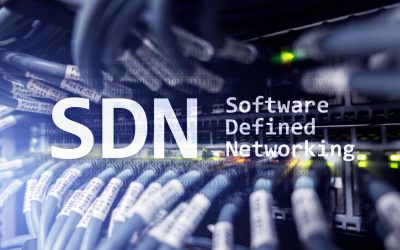Highlights:
- The network is a real foundation of an organization, as it is useful in connecting on-premises servers to the public cloud and edge data centers.
- SDN or software-defined network infrastructure has a clear significance in providing a continuous network and robust security policies.
In this century, businesses are expanding rapidly and quickly adapting to the dynamic nature of digitalization. Technology is unveiling new ways for businesses to evolve and modernize. We, as a business, need to be up-to-date with new technological trends and avenues that are likely to benefit us. Regarding network modernization and cloud applications, in particular, there are several connections between them. The speed at which information is set to be delivered is also crucial to success. Data is needed to move at the right pace, but it will be possible when there is a profound network setup. Let’s dive deeper into these terms separately and then collectively to understand the subject better.
What is Network Modernization?
The network performs a critical function in reviving digital transformation. The network is a backbone of any enterprise, as it connects on-premises servers to the public cloud and edge data centers. Employee working remotely or in a branch can work properly with a strong network.
According to Insight, 37% of top executives had set modernizing networking technology as a primary objective for 2022.
A modernized network is capable of shaping the demands of the modern world. It will then be easier for organizations to achieve digital transformation goals. An organization’s advantages after moving to the cloud are impossible without modern networking. It enables the organization to meet its demands or needs in a complex environment; applications and services are accessible 24/7/360 days without any connectivity issues.
The modern network considers all the critical facts while working on remote locations, high bandwidth consuming video applications, cloud services, traffic patterns, and business application landscape.
A modern network can respond swiftly to the changing expectations of customers or users. It has come up with more modern and adaptable solutions.
What are Modern Cloud Applications?
The web-based application needs a continuous internet connection. On the other hand, a cloud-based application can be stored over the cloud and are accessible offline. Cloud-based applications are more advanced as it ensures uptime, security, and integration with other systems. These are the basic difference between the two.
Modern cloud applications are deployed across private cloud, public cloud, data centers, and edge-data centers, sometimes delivered as SAAS as well. Modern application has become the cornerstone of an organization’s digital strategy.
What are the Functions of Cloud Strategies:
A company’s cloud strategy is a plan where particular technical activities are directly proportional to the business outcomes. Business priorities and cloud adoption efforts are the active elements that validate and define the strategy.
An organization’s cloud strategy looks after the following:
- Finance
- Line of business
- Human resources
- Operations
- Enterprise architecture
- IT Infrastructure
- Application group
Cloud strategies facilitate the effective management of corporate operations, business processes, consumer interactions, and product development cycles. A well-versed cloud strategy provides means for involving key participants in a more organized way which is a need of an hour.
To fulfill the imperatives of cloud and multi-cloud strategies, following pointers need to be considered and implemented:
- The data center network needs to be modernized.
- There is a need to be the automation of networks.
- The software-defined network is necessary to provide continuous network and security policies.
- SDN or software-defined network infrastructure provides operational simplicity, elastic scale, and ubiquitous visibility and supports traditional and cloud-native applications spanning on-premises environments and clouds.
- SDN helps add a level of abstraction to the functions of network nodes like switches, routers, bare metal servers, etc., beneficial to manage globally.
- Simplification of the network is needed—Data-centre network to be more agile and open.
- The network needs to be easy to deploy, easy to manage, easy to support, and easy to consume.
To satisfy the future networking needs of an industry and to provide portable application layer networking, the below functionality needs to be followed.
- Service meshes: A service mesh is an infrastructure layer that controls service-to-service communications over a network. It enables application components to interact with one another. Service meshes appear with microservices, containers, and cloud-based applications.
- Ingress Controller: Ingress Controller is used for fulfilling the ingress, is a good load balancer, and helps in configuring edge routers to handle the traffic loads.
- Microservices: It improves performance as teams handle particular services more than a whole application. However, it accelerates the functions like greater accountability, good compliance, and enriched data security.
- Visibility into workloads: Automatic tracking of workloads helps in good visibility, control, and compliance. Application controllers assign a unique identifier to every workload, which leads to more effective monitoring and policy controls for any particular workload. It is useful in dealing with dynamic traffic patterns. It is also valuable for creating asset inventory reports. In addition to this, it will also provide an updated representation of enterprise applications.
Winding Up:
The demands of IT administrators and network users with network modernizations are enormous and overwhelming. Organizations face skill gaps to keep up with the fluid and fast-paced cloud domain. The cloud community demands full automation at every level to attain great agility, scalability, flexibility, and compliance. AI-tailored virtual network with actionable insights to create a good user experience is needed at this point in time.
Nonetheless, workflow simplification through automation is necessary. AI-tailored network incorporated with micro-services helps save time and money. The challenges are extensive concerning IT processes and staff productivity. Besides this, there is a continuous threatening security challenge for hybrid IT and multi-cloud application landscape.








































































